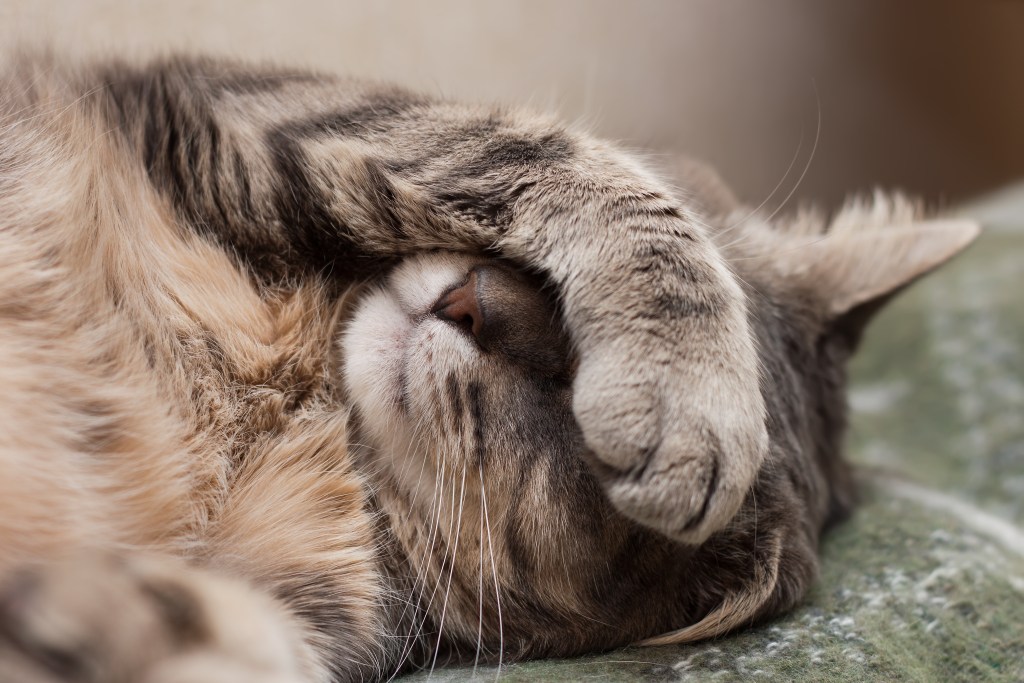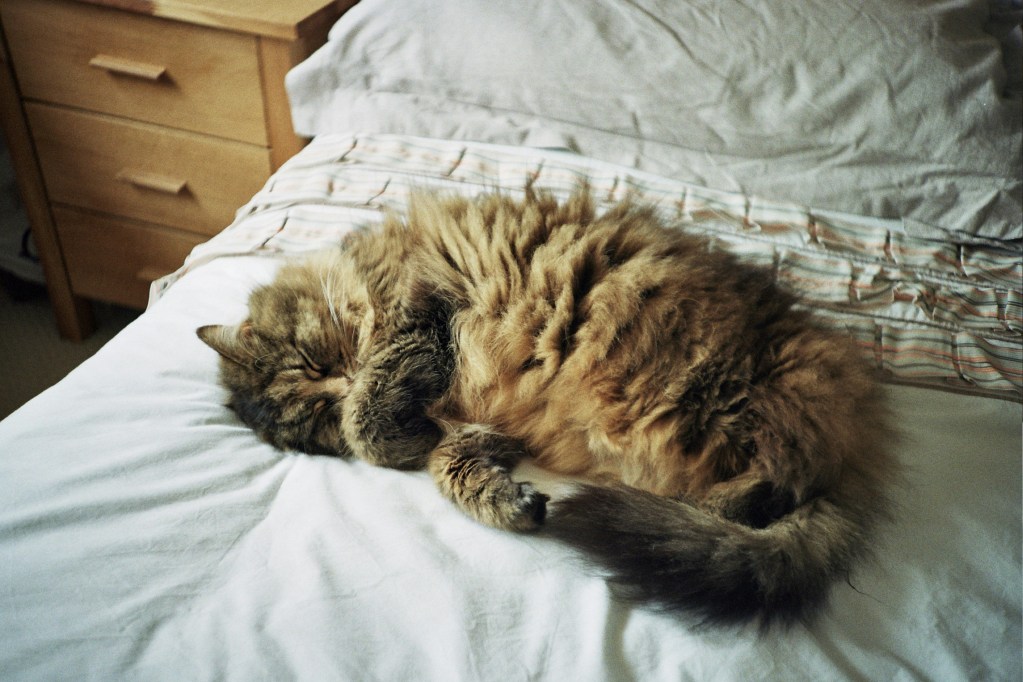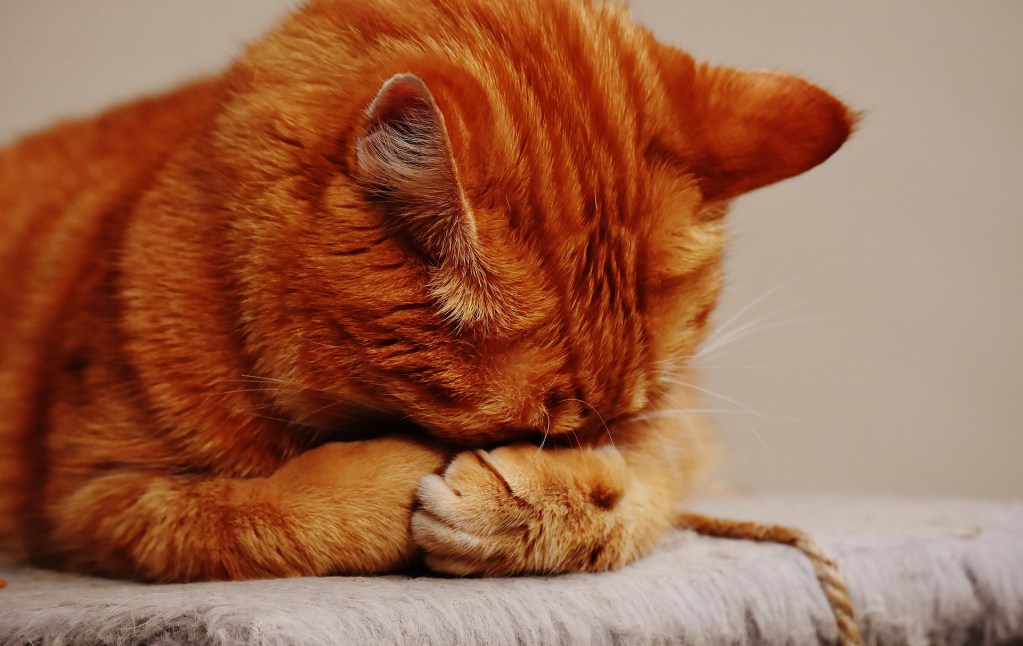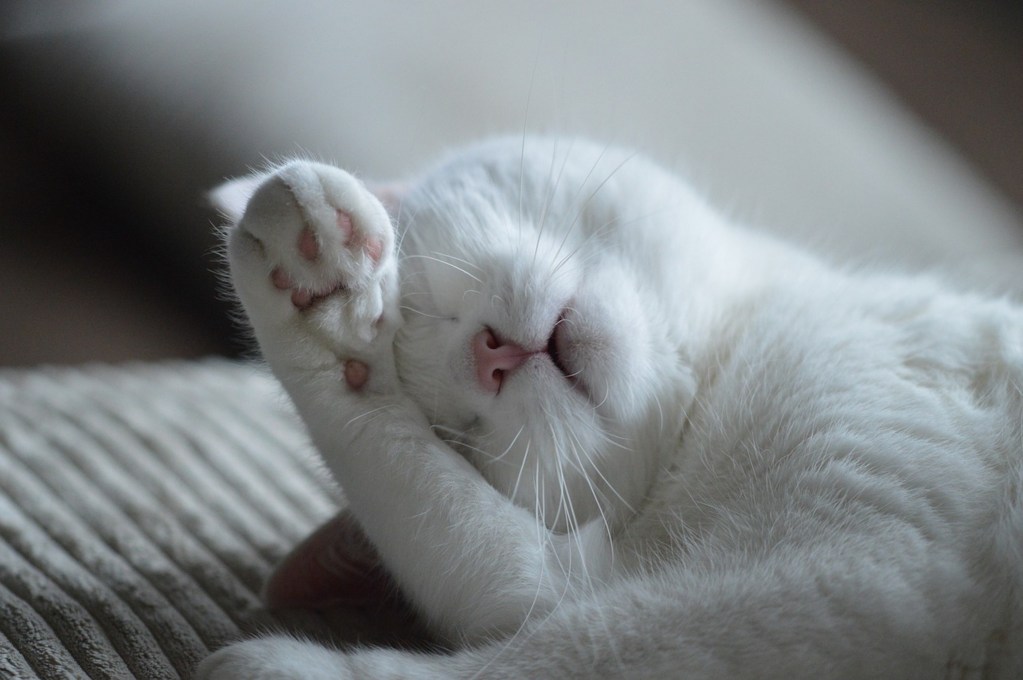
If you ever notice your cat sleeping in an especially cute or odd-looking position, you’re not the only one. Most cats get comfy in unique ways — whether curled up on top of a laptop or stretched out on their back like a dog — but some feline sleeping positions are more difficult to understand than others.
For example, why do cats cover their face when they sleep? There are several noteworthy reasons, though it’s up to you to decipher which reason applies to your kitty. The good news is that none of these reasons are cause for worry unless, of course, there are other unusual behaviors or symptoms present. If this is the case, please consult your cat’s veterinarian instead!
If sleeping with their paws covering their face is all your feline friend is doing, all you need to do is keep an eye on them. If there is a minor problem going on, like seasonal allergies, you’ll be able to notice and help your cat sooner rather than later.
Sense of security and comfort

Think about the position you get into when you go to bed each night or even the position you wake up in the morning. You might be one of those people who sleeps like an angel with your arms by your side, but odds are, you move around a bit. Your arms might be up, you may have an extra pillow, or you may even use an eye mask to keep it dark while you sleep. In a way, cats do the same thing.
Some felines prefer a darker environment while curled up on their cat bed, so they’ll use their paws to cover their eyes. Resourceful, right? If this is the case, your kitty may put their paws down when the room gets darker, but others may be too deep asleep to notice.
For other cats that sleep a lot, having their paws on their face can just be comfortable. It can be a cozy alternative to having their paws hanging off the ledge of a cat tree, for example, or it could be a position that doesn’t aggravate the joints of old cats with arthritis.
The comfort that comes from paws on the face is a biological instinct. Years and years ago, wild cats might sleep this way as an extra layer of protection around the head in case of predators. A cat’s head is the most vulnerable part of their body, after all.
Staying warm

If your four-legged friend curls up and wraps their paws around their face more frequently in winter, they may be getting cold. Cats gain and lose body heat from their nose, and the tail or paws usually come in handy when warming a chilly nose. If you’ve ever pulled up the blankets to cover your nose on a cold winter night, you’ve been there, too.
When you suspect that your kitty may be feeling chilly, you can offer a blanket or warm the environment. Not many cats enjoy wearing sweaters, but this can be another smart solution for hairless cats and those extra vulnerable to the cold. If you live in a cold climate or have a cat that seems to thrive in warmth, you may want to invest in a heated cat bed to keep them comfy and cozy all year long.
Itching or grooming

Sometimes, your cat may just be very, very sleepy — so sleepy, in fact, that they can’t even finish grooming themself. It’s not unheard of for a feline to fall asleep mid-groom with their paws still on their face. When this happens, some fur may still be tousled and damp, and older cats may even let their tongue hang out. It can be a cute thing to witness, and it’s no reason to be concerned unless your cat seems tired to the point of lethargy.
Other times, your cat may fall asleep while itching their nose. This sounds adorable (and we’ll admit that it is), but it could be a sign of allergies or an illness, if you notice this behavior repeatedly. Cats with respiratory allergy symptoms may experience nasal discharge, watery eyes, constant sneezing, coughing, and even wheezing. Similarly to people, it’s much more common for a cat to have a chronic allergy problem with mild-to-moderate symptoms, but severe allergic reactions can occur.
Cats have several different kinds of allergies, including:
- Food allergies
- Flea allergies
- Atopic dermatitis (environmental)
- Allergic contact dermatitis
- Feline asthma (allergic bronchitis)
- Drug allergies
The treatment for your cat’s allergic reaction depends on the type of allergy, so it requires a vet visit and close observation. This is just one reason why it’s so important to know what’s “normal” for your cat — paws on the face while sleeping can indicate a number of different things, but mostly it’s nothing to worry about. It’s simply adorable!



